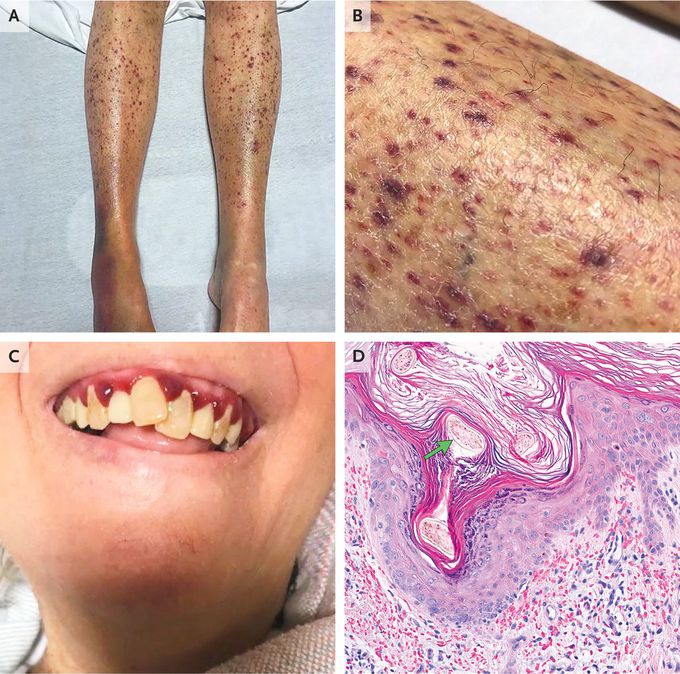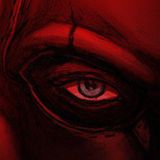


Scurvy
Scurvy is the clinical disease caused by Vitamin C deficiency with characteristic mucocutaneous and musculoskeletal manifestations. Causes include restricted diets such as those followed by individuals suffering from conditions like malabsorption, eating disorders, malignancy or even psychiatric disorders like depression. The initial clinical features of scurvy include general malaise, poor appetite, failure to thrive, fever and tachypnoea. Eventually shortness of breath, wasting, anemia, oedema, mucocutaneous, ocular and musculoskeletal symptoms develop. The mucocutaneous features of scurvy include development of follicular hyperkeratotic papules, perifollicular haemorrhages, purpura and ecchymoses on the legs. The hair are often twisted, fragile and are known as Corkscrew or Swan-neck hair. Apart from this there's poor wound healing and re-opening of old healed scars. Splinter haemorrhages in nails, red, swollen gums, bleeding from the gums, loosening and loss of teeth are some of the other mucocutaneous features. The ocular effects of scurvy manifest as eye dryness, irritation and subconjunctival, periorbital or orbital haemorrhage. The musculoskeletal symptoms include painful haemarthosis, subperiosteal haemorrhage, costochondral junction beading known as 'scorbutic rosary’ and intramuscular bleeding leading to woody oedema. There's also severe pain of arms and legs and reluctance to walk. The treatment includes increasing the vitamin C intake through diet and supplements. In adults, oral Vitamin C 1000 mg/d in divided doses for at least one week, then 300-500 mg/d for a further week, followed by the recommended daily allowance is given. It may also be given intravenously, intramuscularly or per rectum. Image source: https://www.nejm.org/doi/full/10.1056/nejmicm1911315


